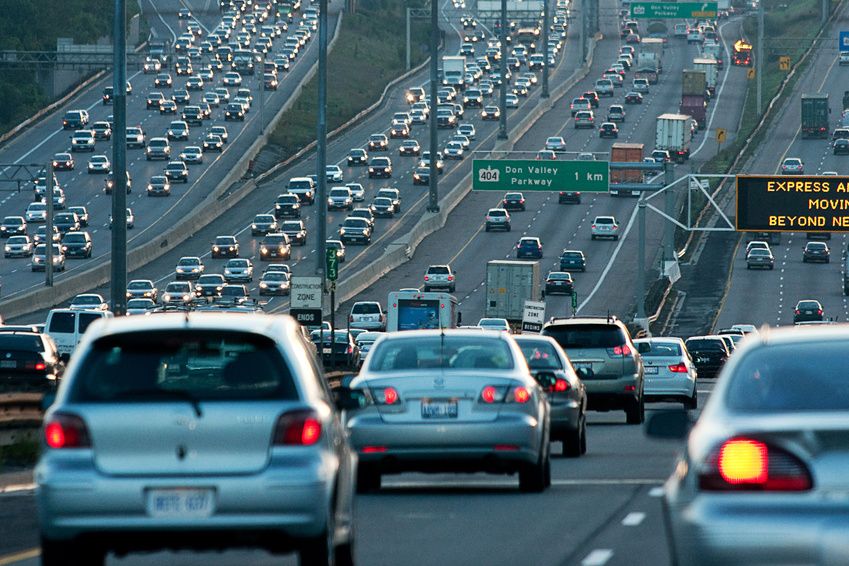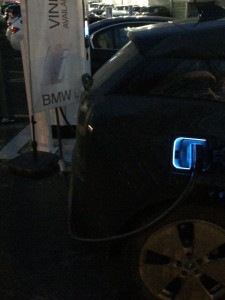When you run a car it gets hot, right? That’s just what they do. We talk about “warming up” the car and we know that the engine gets too hot to touch?
Have you ever wondered why? The aim is not to make something hot, we want a car to transport us from place to place.
It seems like we’re driving around hundreds of thousands of mobile heaters and the effect of this on the background city heat certainly surprised me. Read on…

Since I’ve purchased an electric car about 4 months ago, I realised that it doesn’t get hot. Not only is it very silent and doesn’t emit smelly fumes, it doesn’t get hot either. That felt very strange because I’m used to cars getting hot.
This got me thinking about two things in particular;
(1) are we using a lot of fossil fuels to generate heat that we don’t want? We want the car to move, not get hot.
(2) there are a lot of cars in the world and especially in cities. It’s a bit like thousands and thousands of people driving mobile heaters around all day. Could they be contributing to the environmental temperature around populated areas. Could they be contributing to city heat? Must be, but to what degree?
First, let’s consider the internal combustion engine.
Internal combustion engines are inefficient
It didn’t take much investigation to find out that the internal combustion engine in the standard car is horribly inefficient. This webpage from the California Energy Commission lists the following energy losses for the standard car;
- Engine Losses – 62.4%
- Idling Losses – 17.2%
- Accessories (aircon, power steering, etc.) – 2.2%
- Driveline Losses (transmission, etc) – 5.6%
- Aerodynamic Drag – 2.6%
- Rolling Resistance – 4.2%
- Overcoming Inertia; Braking Losses – 5.8%
So over 60% of the energy coming from the fossil fuels we’re burning is lost immediately through the inefficiencies (mostly converted to heat) of the internal combustion engine. Then, on top of that, there’s over 17% lost just by running those engines in idling mode when stopped. On the webpage, they say;
“Only about 15 percent of the energy from the fuel you put in your tank gets used to move your car down the road or run useful accessories, such as air conditioning.”
That really is shocking. Only 15% !!
In my electric car, the engine, idling and driveline losses listed above don’t exist for the most part. Also, most of the braking losses are actually recuperated through recharging the batteries when slowing down. So it’s fairly easy to see that electric cars avoid wasting over 70% of the energy wasted by internal combustion engines. No wonder electric cars end up being so cheap to run.
Cars and City Heat
Now I imagine a city with hundreds of thousands of cars driving around all of the time. All of these cars are burning fossil fuels to power inefficient internal combustion engines, and easily over 50% of the energy created by burning those fossil fuels is converted into the simple heat of the engines (we all know how hot an engine gets after it’s been running for a while).
Effectively, cities with hundreds of thousands of cars have hundreds of thousands of mobile heaters driving around all the time. I wondered if that could have an effect on the temperature perceived by the inhabitants of the city.
Amazingly, it’s true. Just having cars in a city makes the overall temperature hotter.
This article from CBS News reports how research in China shows that if all cars in Beijing were switched to electric, the ambient temperature would reduce by 1ºC or about 1.7ºF.
So cars really do have a noticeable impact on city heat. Sounds a bit amazing, but it also stands to reason. Having a huge number of mobile heaters running around the roads all the time must have an effect.
Where to now?
Apart from the direct impact of inefficient internal combustion engines on city heat, the biggest news here for me is that over 70% of the fossil fuels we burn in our cars is actually wasted. It’s not helping us with transportation.
Worldwide we burn over 95 million barrels of fossil fuels every day. Just imagine how much of that is simply wasted (and adding to city heat).
This is huge and so wasteful. It would serve us well if we found alternatives to these fossil fuel burning, inefficient internal combustion engines.

We’re not ready to do a complete switch to electric cars, but just imagine if we could. Even if all the electricity was generated by burning fossil fuels, we’d have to burn a lot less to generate the power needed for electric cars, because they are much more efficient transport vehicles. And, we’d not be adding to the city heat.
Even though we aren’t ready to switch completely to electric cars, the world is ready to start. My experience with an electric car has been very good. This has proven to me that for any family that has a car used for short, runaround trips, then an electric car is a perfectly viable option, and they’d save significant money on fuel as an added bonus.
In terms of living life in the right direction and in terms of Using 10 Percent Less, getting away from cars with internal combustion engines as soon as possible must be a priority. We would burn less fossil fuels, pollute less, have less effect on city heat, save money and reduce our impact on the planet. All of that sounds good.
Are there other things more important that we should be focussing on? Please leave you comments below.
Related Links – Cars and City Heat
- Electric Cars Can Make Cities Cooler – smithsonian.com
- Urban Heat Island – wikipedia.org
- Why does a car’s engine get hot? – wikieducator.org
Leave a Reply